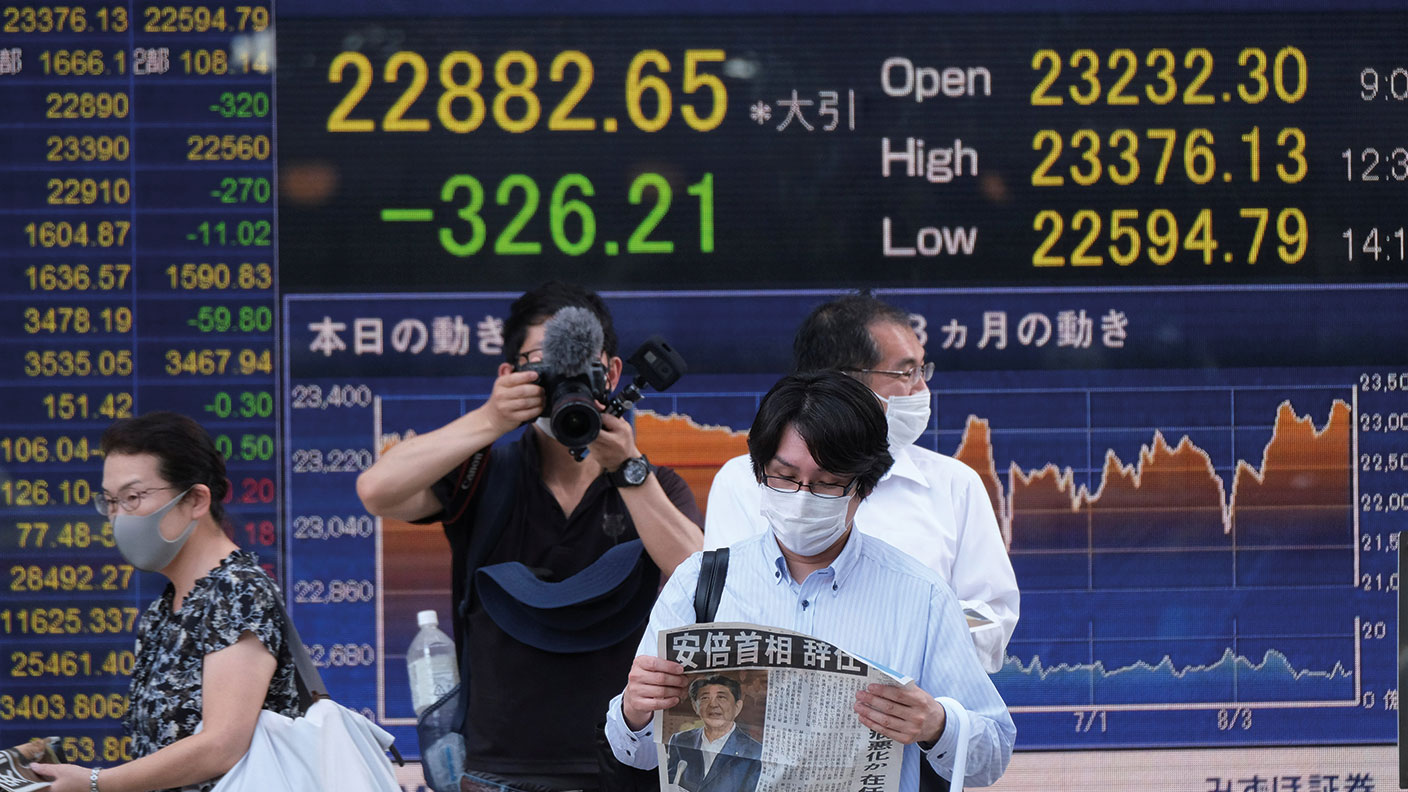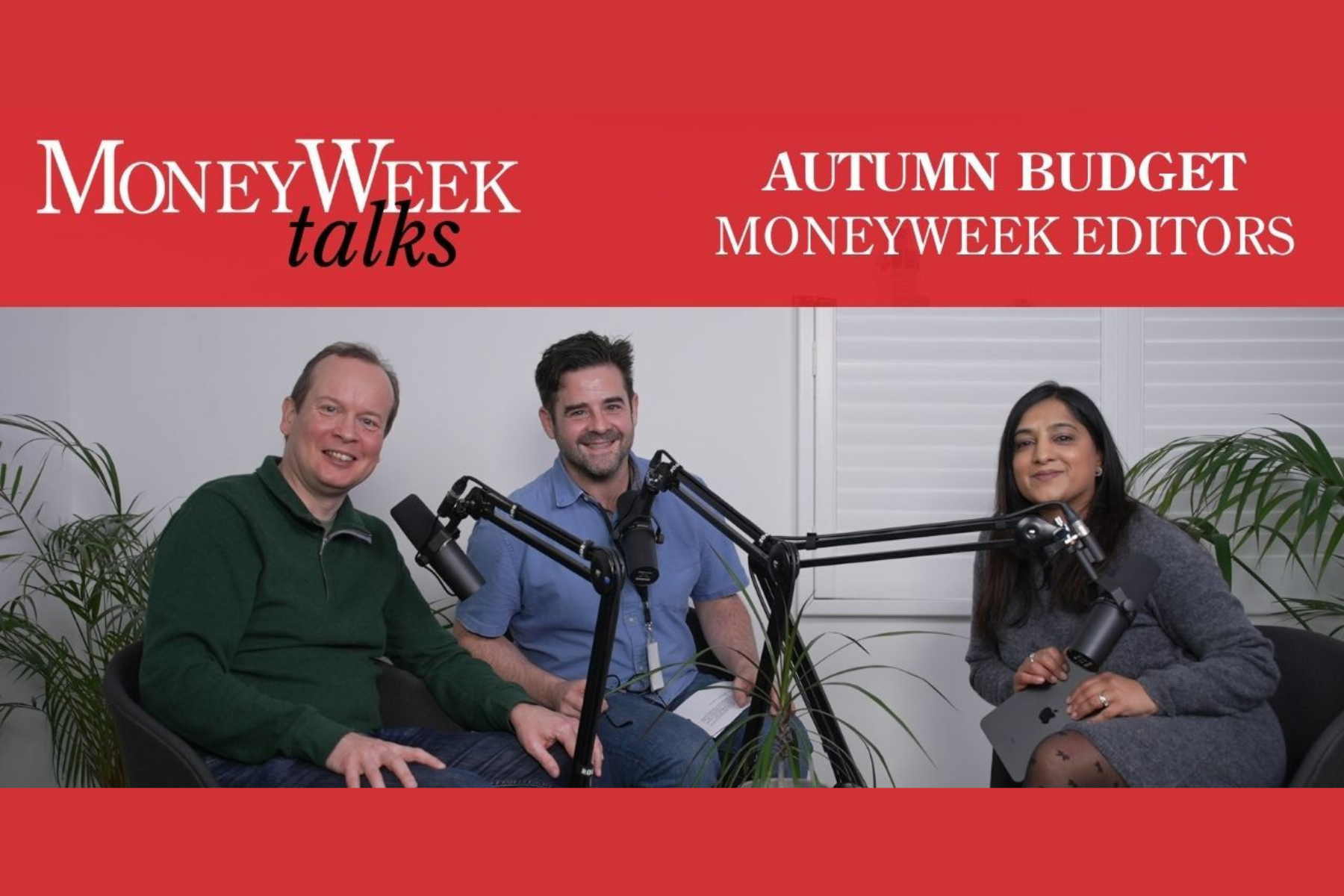Japanese stocks still look cheap after Shinzo Abe's resignation
A period of uncertainty after Shinzo Abe's resignation could be a good chance to buy Japanese stocks at a good price.


What has happened?
Japan’s longest-serving prime minister, Shinzo Abe, in power since late 2012, announced last Friday that he would be resigning on health grounds as soon as his party could elect a successor. During a brief first spell as PM in 2006/7 Abe was seen as a conservative nationalist. In his second lengthy spell, since 2012, he has been seen as relatively pragmatic. He has provided much needed political stability, improved relations with China as well as allies in Asia (with the notable exception of South Korea), sealed important trade deals, and pursued an economic policy – “Abenomics” – aimed at restoring growth and ending deflation. His decision to step down unnerved markets, although his successor is likely to adopt a very similar policy programme.
What is “Abenomics”?
It was the attempt, from 2013 onwards, to revitalise Japan’s long-sluggish and deflation-prone economy with a “three arrow” strategy of ultra-loose monetary policy, fiscal stimulus and structural reforms. The most long-lasting of these was the sustained programme of “quantitative and qualitative” easing by the Bank of Japan under its Abe-appointed governor, Haruhiko Kuroda (who will remain in post after Abe’s departure). By 2018, after a five-year bond-buying spree, Japan’s central bank had become the first among G7 nations (and only the second after Switzerland) to own assets worth more than the whole of the national economy.
What about the structural reforms?
One of the most common criticisms of Abe is that he never delivered on his promises of deep-seated structural reforms. “It is true he never did the most radical things, such as tearing up protections for salaried staff,” says the Financial Times. “But he did liberalise Japan’s electricity market, open the country to Chinese tourists, cripple the agriculture lobby and sign two huge trade deals.” Labour-market reforms aimed at attracting more women into the workplace have been modestly successful. And Abe also introduced important corporate governance reforms, combined with a new stewardship code, that have made Japanese investments far more attractive to foreign and institutional investors. From 2017-19, Japan attracted more private-equity investments than any other country, and its level of M&A activities is second only to the US.
MoneyWeek
Subscribe to MoneyWeek today and get your first six magazine issues absolutely FREE

Sign up to Money Morning
Don't miss the latest investment and personal finances news, market analysis, plus money-saving tips with our free twice-daily newsletter
Don't miss the latest investment and personal finances news, market analysis, plus money-saving tips with our free twice-daily newsletter
Did Abenomics prove a success?
Yes and no. Kuroda’s market-pleasing policy of ultra-low interest rates and bond-buying drove a rally in stocks and sent the yen lower, boosting exporters, and helping to keep growth in positive territory. Inflation picked up a little, meaning officials could declare that the long era of deflation was over. Corporate profits rose, and unemployment remained low, but in spite of Abe’s repeated urgings, those profits never fed through into wage inflation sufficiently strongly to drive a sustained boost to consumer spending. Inflation remained stubbornly below the central bank’s 2% target. Thus, on its own terms, Abenomics failed. Most notably, the anti-growth effects of raising the consumption tax from 5% to 10% outweighed the stimulus effect of great government spending. Yet under Abe both growth and employment improved, partly due to the weaker yen. And there has been no debt crisis, despite the persistent warnings of Abe’s critics (including the deficit hawks within his own party).
What else did he achieve?
Abe’s efforts benefited from propitious timing, says Ben Dooley in The New York Times. In particular, China’s economy surged during his tenure, boosting its appetite for Japanese machine tools and the specialised components needed to manufacture things such as cars and high-end electronics. In addition, Chinese tourists, “eager to spend their growing wages, flooded Japan’s cities and tourist sites, splashing out on luxury goods”. By late last year, however, Japan’s economy was contracting due to slowing global trade and the brewing trade war between the US and China, which badly hit Japanese exports. With Japanese national debt at 150% of its GDP (the highest proportion of any developed economy), Abe once again turned to a rise in the consumption tax in the hope of tackling the debt and shoring up social programmes. The tax rise killed off spending, and then a vicious typhoon devastated central Japan, compounding the economic damage. By the time the Covid-19 pandemic took hold, Japan was already in recession.
So Abe leaves on a bad note?
Indeed. Japan’s GDP fell by an annualised 28% in the second quarter, and Abe’s government weighed in with a stimulus package worth an astonishing 40% of GDP, including low interest loans and cash grants. Covid aside, Abenomics will be remembered for growing the economy, creating jobs and keeping deflation at bay, says Kathy Matsui, vice-chair of Goldman Sachs Japan. The question now is will Abe’s successor be able to tackle the remaining reform agenda items and bring Japan “once and for all out of deflation”, says Matsui. For the rest of the world – a world struggling with a slide towards stagnation, deflation and ultra-low interest rates — Abenomics offers “powerful lessons”, says Robin Harding in the Financial Times.
What are they?
The key lesson is that “monetary policy works”; the initial “bazooka” of massive asset purchases in 2013 was highly effective. “Bond yields fell; stockmarkets boomed; and most important, the yen fell below ¥100 to the dollar, a boon to Japanese industry.” Another is that “weak economies cannot handle tax hikes” and economic strength is a precondition for fiscal tightening. Abe went off course when the consumption tax rose from 5% to 8% in 2014, ultimately pushing Japan back into recession. “If you promise stimulus, and deliver restraint, you get failure,” says Harding. “That is the story of Abenomics in brief.”
Get the latest financial news, insights and expert analysis from our award-winning MoneyWeek team, to help you understand what really matters when it comes to your finances.
Cris Sholto Heaton is an investment analyst and writer who has been contributing to MoneyWeek since 2006 and was managing editor of the magazine between 2016 and 2018. He is especially interested in international investing, believing many investors still focus too much on their home markets and that it pays to take advantage of all the opportunities the world offers. He often writes about Asian equities, international income and global asset allocation.
Cris began his career in financial services consultancy at PwC and Lane Clark & Peacock, before an abrupt change of direction into oil, gas and energy at Petroleum Economist and Platts and subsequently into investment research and writing. In addition to his articles for MoneyWeek, he also works with a number of asset managers, consultancies and financial information providers.
He holds the Chartered Financial Analyst designation and the Investment Management Certificate, as well as degrees in finance and mathematics. He has also studied acting, film-making and photography, and strongly suspects that an awareness of what makes a compelling story is just as important for understanding markets as any amount of qualifications.
-
 How much would it cost you to buy a house in Great Britain's happiest places?
How much would it cost you to buy a house in Great Britain's happiest places?Average asking prices for a property in the happiest place in Britain are below the national average
-
 How the Budget will hurt you: MoneyWeek Talks
How the Budget will hurt you: MoneyWeek TalksPodcast An Autumn budget podcast special episode, featuring MoneyWeek editors Kalpana Fitzpatrick, Andrew van Sickle and Cris Heaton.
-
 Big Short investor Michael Burry closes hedge fund Scion Capital
Big Short investor Michael Burry closes hedge fund Scion CapitalProfile Michael Burry rightly bet against the US mortgage market before the 2008 crisis. Now he is worried about the AI boom
-
 The global defence boom has moved beyond Europe – here’s how to profit
The global defence boom has moved beyond Europe – here’s how to profitOpinion Tom Bailey, head of research for the Future of Defence Indo-Pac ex-China UCITS ETF, picks three defence stocks where he'd put his money
-
 Profit from a return to the office with Workspace
Profit from a return to the office with WorkspaceWorkspace is an unloved play on the real estate investment trust sector as demand for flexible office space rises
-
 New frontiers: the future of cybersecurity and how to invest
New frontiers: the future of cybersecurity and how to investMatthew Partridge reviews the key trends in the cybersecurity sector and how to profit
-
 An “existential crisis” for investment trusts? We’ve heard it all before in the 70s
An “existential crisis” for investment trusts? We’ve heard it all before in the 70sOpinion Those fearing for the future of investment trusts should remember what happened 50 years ago, says Max King
-
 8 of the best properties for sale with wildlife ponds
8 of the best properties for sale with wildlife pondsThe best properties for sale with wildlife ponds – from a 16th-century house in the Ashdown Forest, to a property on Pembrokeshire’s Preseli Hills
-
 Why a copper crunch is looming
Why a copper crunch is loomingMiners are not investing in new copper supply despite rising demand from electrification of the economy, says Cris Sholto Heaton
-
 Where to look for Christmas gifts for collectors
Where to look for Christmas gifts for collectors“Buy now” marketplaces are rich hunting grounds when it comes to buying Christmas gifts for collectors, says Chris Carter
